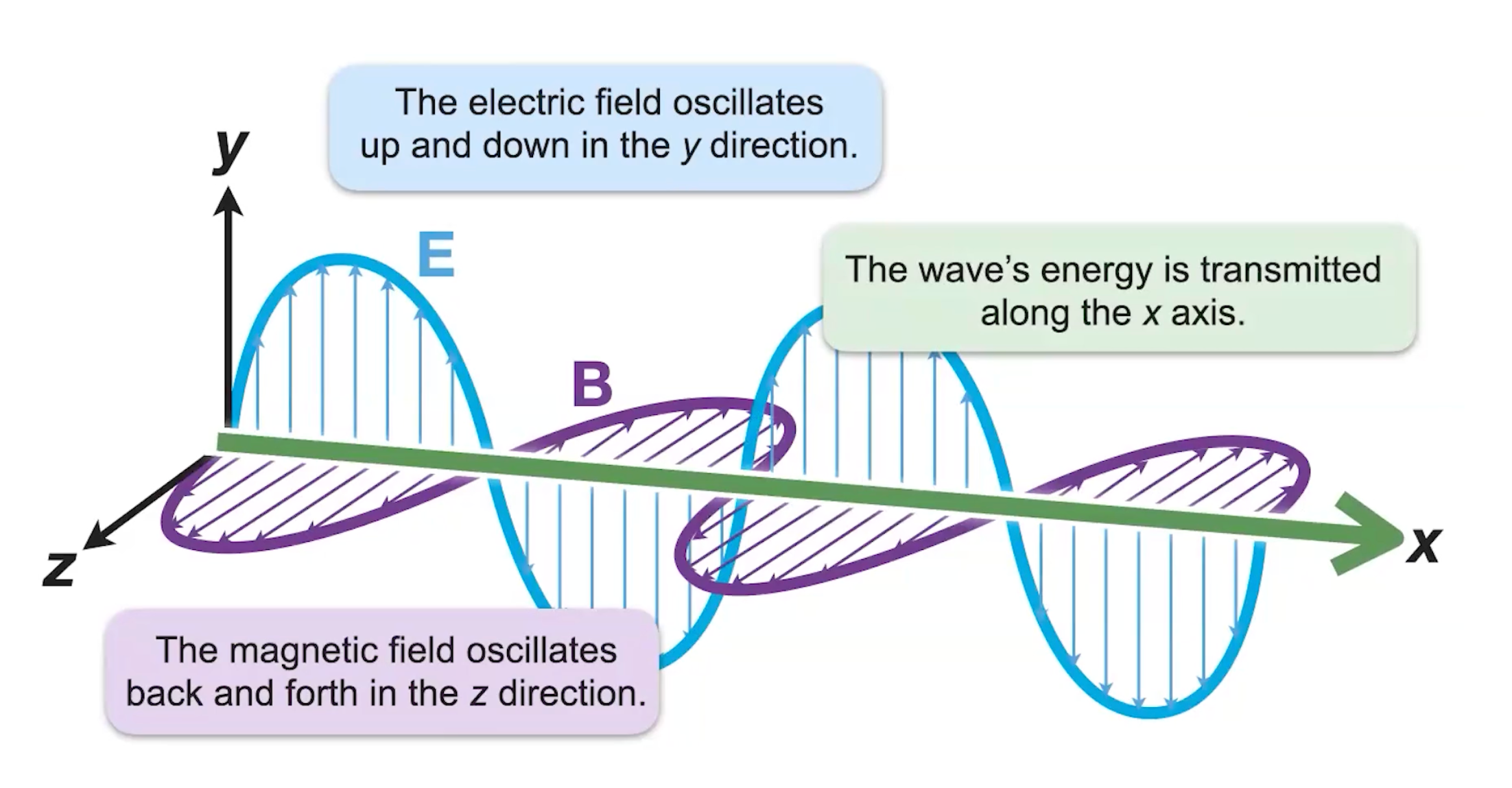Since electromagnetic waves travel through vacuum, their speed depends on the electric permittivity and magnetic permeability of the material it flows through.
Wave Speed
Electric Permittivity
Electric permittivity is represented by . In vacuum space, the electric permittivity is equal to the vacuum permittivity of . In physical materials, the permittivity is higher than that of a vacuum, which is why it gets multiplied by a positive number in the capacitance equation. The permittivity of water is .
Capacitance Equation
Coulombs Constant Equation
Magnetic Permeability
Magnetic permeability is represented by . In physical materials, the magnetic permeability is also higher than that of in vacuum space. The vacuum permeability is while the permeability of nickel (for example) is .
Speed of Light
Since wave speed depends on electric permittivity and magnetic permeability, the speed of light depends on these two factors. You can find the speed of any electromagnetic wave through the formula: As a result, when we use the vacuum permittivity () and permeability (), we calculate the speed of light to be . This also means that light is slower in everything else, compared to its speed in space.
Electromagnetic Waves
Electromagnetic waves are a combination of transverse electric waves and magnetic waves that oscillate at right angles to each other. From 12.1 — Magnetic Fields, we know that the motion of charges cause magnetic fields, and that magnetic fields and electric fields interact according to the right hand rule.
When graphed, electric fields can go on the y-axis and magnetic fields can go on the z-axis. The fields are perpendicular to each other, and we can see how these waves interact with each other:

We know that the energy (the wave itself) travels perpendicular to both the fields, which is on the x-axis:

Electromagnetic Spectrum
All electromagnetic waves are caused by oscillating electric and magnetic fields, as seen above. However, electromagnetic waves can oscillate anywhere from a few times a second to several billion billion times per second. The frequency of oscillation and the wave’s transmission speed in a medium determines the wavelength of the electromagnetic wave. The wave’s frequency describes the unique way in which it interacts with other objects, and we use frequency ranges to group different types of electromagnetic waves.
There are seven categories of electromagnetic waves, with increasing frequency and decreasing wavelengths: radio, microwave, infrared, visible, ultraviolet, x-rays, and gamma rays.
- Radio Waves:
- Frequency: 3 Hz to 3,000,000 Hz
- Wavelength: 100,000,000m to 10m
- Radio waves generally don’t interact with tiny particles in the sky because of their long wavelength. Essentially, electrons oscillating back and forth in a conductor produce oscillating electric and magnetic fields
- Microwaves:
- Frequency: Hz to Hz
- Wavelength: 1m to 1mm
- Microwaves are just the right frequency for radar and Wi-Fi. Essentially, oscillating electrons in one wire create microwaves which cause electrons to oscillate in a different wire.
- Infrared Waves:
- Frequency: Hz to Hz
- Wavelength: 1mm to 750nm
- Warm objects emit radiation in the middle of this range, so thermal cameras measure wavelengths between 2.5 m and 10 m.
- Visible Waves:
- Frequency: Hz to Hz
- Wavelength: 700nm (red light) to 400nm (violet light)
- Visible electromagnetic waves are also called light, but sometimes electromagnetic waves of all wavelengths are collectively referred to as light.

- Ultraviolet Waves:
- Frequency: Hz to Hz
- Wavelength: 100 m to 100 nm
- Ultraviolet radiation is about a tenth of the sun’s power output, and the shortest UV wavelengths are extremely dangerous.
- X-Rays:
- Frequency: Hz to Hz
- Wavelength: 1nm to 10pm
- X-Rays have just the right wavelength to interact with matter by having collisions that conserve momentum. Their wavelength is perfect for diffraction off metallic surfaces.
- Gamma Rays:
- Frequency: Hz
- Wavelength: 1pm
- Gamma rays are the most energetic electromagnetic radiation, for example: radioactive decay or sterilizing surgical tools.
These wave categories have the following frequencies and wavelengths:

With the exception of visible light, none of the wavelength categories have absolute boundaries. For AP Physics 2, we will need to know the order of the categories and remember that visible light’s wavelength is 400nm (violet light) to 700nm (red light).